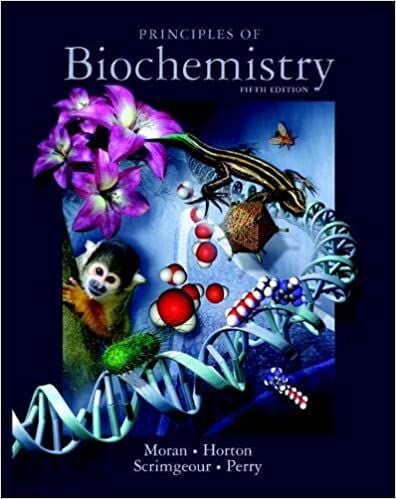
By Laurence Moran , Robert Horton , Gray Scrimgeour, Marc Perry
| File Size | 69 MB |
| File Format | |
| Download link | Free Download | Become a Premium, Lifetime Deal |
| Support & Updates | Contact Us | Broken Link |
| Join Our Telegram Channel |  |

By Laurence Moran , Robert Horton , Gray Scrimgeour, Marc Perry
PART 1: INTRODUCTION
1. Introduction to Biochemistry
2. Water
PART 2: STRUCTURE AND FUNCTION
3. Amino Acids and the Primary Structures of Proteins
4. Proteins: Three-Dimensional Structure and Function
5. Properties of Enzymes
6. Mechanisms of Enzymes
7. Coenzymes and Vitamins
8. Carbohydrates
9. Lipids and Membranes
PART 3: METABOLISM AND BIOENERGETICS
10. Introduction to Metabolism
11. Glycolysis
12. Gluconeogenesis, The Pentose Phosphate Pathway, and Glycogen Metabolism
13. The Citric Acid Cycle
14. Electron Transport and ATP Synthesis
15. Photosynthesis
16. Lipid Metabolism
17. Amino Acid Metabolism
18. Nucleotide Metabolism
PART 4: BIOLOGICAL INFORMATION FLOW
19. Nucleic Acids
20. DNA Replication, Repair, and Recombination
21. Transcription and RNA Processing
22. Protein Synthesis
| File Size | 69 MB |
| File Format | |
| Download link | Free Download | Become a Premium, Lifetime Deal |
| Support & Updates | Contact Us | Broken Link |
| Join Our Telegram Channel |  |
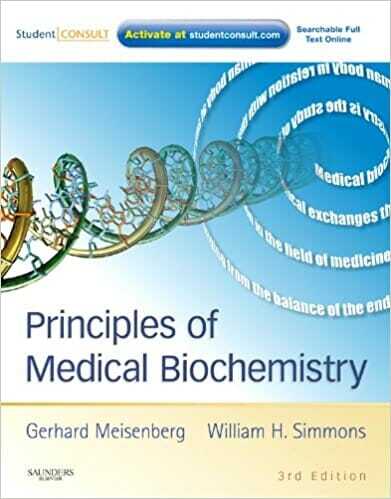
By Gerhard Meisenberg PhD , William H. Simmons PhD
Principles of Medical Biochemistry 3rd Edition PDF. “Highly Commended,” Basic and Clinical Sciences Category, British Medical Association 2012 Medical Book Competition
Principles of Medical Biochemistry 3rd Edition Focuses on the most essential biochemistry principles and how they apply to clinical medicine
| File Size | 33.3 MB |
| File Format | |
| Download link | Free Download | Become a Premium, Lifetime Deal |
| Support & Updates | Contact Us | Broken Link |
| Join Our Telegram Channel |  |
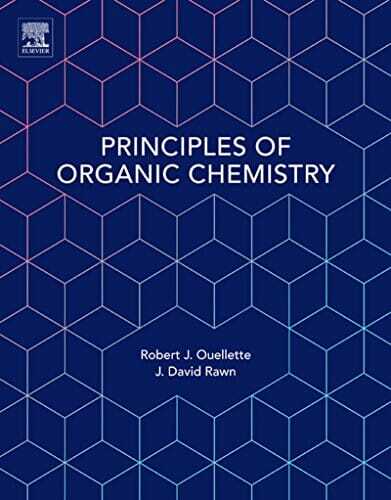
By Robert J. Ouellette , J. David Rawn
Principles of Organic Chemistry Robert J. Ouellette PDF. Class-tested and thoughtfully designed for student engagement, Principles of Organic Chemistry PDF provides the tools and foundations needed by students in a short course or one-semester class on the subject. This book does not dilute the material or rely on rote memorization. Rather, it focuses on the underlying principles in order to make accessible the science that underpins so much of our day-to-day lives, as well as present further study and practice in medical and scientific fields. This book provides context and structure for learning the fundamental principles of organic chemistry, enabling the reader to proceed from simple to complex examples in a systematic and logical way.
Utilizing clear and consistently colored figures, PPrinciples of Organic Chemistry Robert J. Ouellette begins by exploring the step-by-step processes (or mechanisms) by which reactions occur to create molecular structures. It then describes some of the many ways these reactions make new compounds, examined by functional groups and corresponding common reaction mechanisms. Throughout, this book includes biochemical and pharmaceutical examples with varying degrees of difficulty, with worked answers and without, as well as advanced topics in later chapters for optional coverage.
1 – Structure of Organic Compounds
2 – Properties of Organic Compounds
3 – Alkanes and Cycloalkanes
4 – Alkenes and Alkynes
5 – Aromatic Compounds
6 – Stereochemistry
7 – Nucleophilic Substitution and Elimination Reactions
8 – Alcohols and Phenols
9 – Ethers and Epoxides
10 – Aldehydes and Ketones
11 – Carboxylic Acids and Esters
12 – Amines and Amides
13 – Carbohydrates
14 – Amino Acids, Peptides, and Proteins
15 – Synthetic Polymers
16 – Spectroscopy
Solutions to In-Chapter Problems
Index
| File Size | 11.7 MB |
| File Format | |
| Download link | Free Download | Become a Premium, Lifetime Deal |
| Support & Updates | Contact Us | Broken Link |
| Join Our Telegram Channel |  |
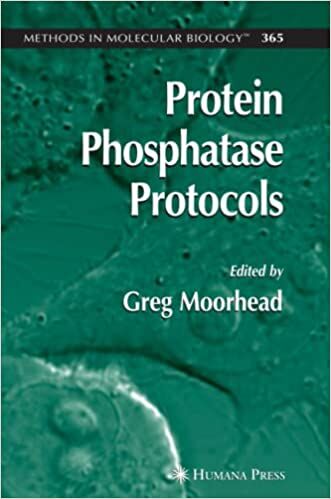
By Greg Moorhead
Protein Phosphatase Protocols PDF Book presents a broad range of protocols for the study of protein phosphatases, all written by experts and innovators from phosphatase laboratories around the world. This volume is a compendium of resources for the study of protein phosphatases and their potential as drug targets. Experimental methodologies are taken from proteomics, bioinformatics, genomics, biochemistry, RNAi, and genetics.
Chapter 1: Analysis of Protein Phosphatases: Toolbox For Unraveling Cell Signaling Networks
Chapter 2: A Brief Introduction to the Protein Phosphatase Families
Chapter 3: Small-Molecule Inhibitors of Ser/Thr Protein Phosphatases: Specificity, Use, and Common Forms of Abuse
Chapter 4: Synthesis and Use of the Protein Phosphatase Affinity Matrices Microcystin–Sepharose and Microcystin–Biotin–Sepharose
Chapter 5: Utilizing Protein Phosphatase Inhibitors to Define PP2A as a Regulator of Ataxia-Telangiectasia Mutated (ATM)
Chapter 6: An Automated Fluorescence-Based Method for Continuous Assay of PP2A Activity
Chapter 7: An In Vivo Assay to Quantify Stable Protein Phosphatase 2A (PP2A) Heterotrimeric Species
Chapter 8: Mutagenesis and Expression of the Scaffolding Aα and Aβ Subunits of PP2A: Assays for Measuring Defects in Binding of Cancer-Related Aα and Aβ Mutants to the Regulatory B and Catalytic C Subunits
Chapter 9: Isolation and Characterization of PP2A Holoenzymes Containing FLAG-Tagged B Subunits
Chapter 10: Purification of PP2A Holoenzymes by Sequential Immunoprecipitation with Anti-Peptide Antibodies
Chapter 11: Purification of PP2Ac from Bovine Heart
Chapter 12: Visualization of Intracellular PP1 Targeting Through Transiently and Stably Expressed Fluorescent Protein Fusions
Chapter 13: Yeast Two-Hybrid Screens To Identify Drosophila PP1-Binding Proteins
Chapter 14: Identification of Cellular Protein Phosphatase-1 Regulators
Chapter 15: Assay for Three-Way Interaction of Protein Phosphatase-1 (Glc7) with Regulatory Subunits Plus Phosphatase Inhibitor-2
Chapter 16: Phosphorylation of the Protein Phosphatase Type 1 Inhibitor Protein CPI-17 by Protein Kinase C
Chapter 17: Purification of Smooth Muscle Myosin Phosphatase Using a Thiophosphorylated Myosin Light-Chain-Affinity Resin
Chapter 18: Proteins Interacting with Saccharomyces cerevisiae Type 1 Protein Phosphatase Catalytic Subunit Identified by Single-Step Affinity Purification and Mass Spectrometry
Chapter 19: Expression of Protein Histidine Phosphatase in Escherichia coli, Purification, and Determination of Enzyme Activity
Chapter 20: The Use of RNA Interference to Analyze Protein Phosphatase Function In Mammalian Cells
Chapter 21: Recognition of a PP2C Interaction Motif in Several Plant Protein Kinases
Chapter 22: Use of Yeast Genetic Tools to Define Biological Roles of Novel Protein Phosphatases
Chapter 23: Targeting of PP2C in Budding Yeast
Chapter 24: Phosphatase Targets in TOR Signaling
Chapter 25: Functional Characterization of the Small CTD Phosphatases
Chapter 26: Genome-Scale Discovery and Characterization of Class-Specific Protein Sequences: An Example Using the Protein Phosphatases of Arabidopsis thaliana
Chapter 27: Yeast Substrate-Trapping System for Isolating Substrates of Protein Tyrosine Phosphatases
Index
| File Size | 4.4 MB |
| File Format | |
| Download link | Free Download | Become a Premium, Lifetime Deal |
| Support & Updates | Contact Us | Broken Link |
| Join Our Telegram Channel |  |
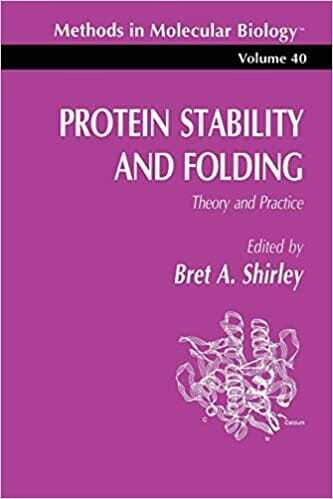
By Bret A. Shirley
Protein Stability and Folding Theory and Practice PDF. The intent of this work is to bring together in a single volume the techniques that are most widely used in the study of protein stability and protein folding. Over the last decade our understanding of how p- teins fold and what makes the folded conformation stable has advanced rapidly. The development of recombinant DNA techniques has made possible the production of large quantities of virtually any protein, as well as the production of proteins with altered amino acid sequences. Improvements in instrumentation, and the development and refinement of new techniques for studying these recombinant proteins, have been central to the progress made in this field. To give the reader adequate background information about the subject, the first two chapters of this book review two different, yet related, aspects of protein stability. The first chapter presents a review of our current understanding of the forces involved in determining the conf- mational stability of proteins as well as their three-dimensional folds. The second chapter deals with the chemical stability of proteins and the pathways by which their covalent structure can degrade. The remainder of the book is devoted to techniques used in the study of these two major areas of protein stability, as well as several areas of active research. Although some techniques, such as X-ray crystallography and mass spectroscopy, are used in the study of protein stability, they are beyond the scope of this book and will not be covered extensively.
| File Size | 22 MB |
| File Format | |
| Download link | Free Download | Become a Premium, Lifetime Deal |
| Support & Updates | Contact Us | Broken Link |
| Join Our Telegram Channel |  |
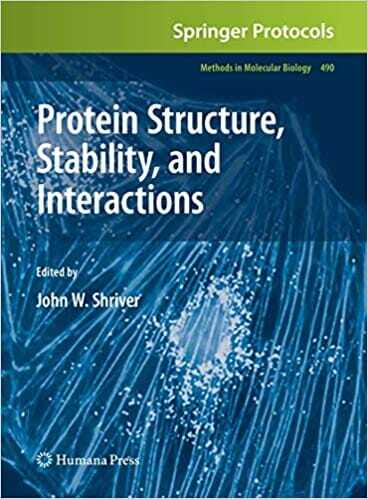
By John W. Shriver
Protein Structure, Stability, and Interactions PDF. In the areas of biochemistry and cell biology, characterizations of stability and molecular interactions call for a quantitative approach with a level of precision that matches the fine tuning of these interactions in a living cell. Supporting and up-dating previous Methods in Molecular Biology™ volumes, Protein Structure, Stability, and Interactions approaches its subject with a focus on theory and practical applications for both established methods as well as exciting new procedures. The volume presents an overview of many techniques currently used to study protein stability and interactions, including scanning and titration calorimetry, spectroscopic methods, high field NMR, and analytical ultracentrifugation. As a volume of the highly successful Methods in Molecular Biology™ series, this work provides the kind of detailed description and implementation advice that is crucial for getting optimal results.
Cutting-edge and easy to reference, Protein Structure, Stability, and Interactions is an ideal guide for all scientists interested in biomolecular interactions.
| File Size | 5 MB |
| File Format | |
| Download link | Free Download | Become a Premium, Lifetime Deal |
| Support & Updates | Contact Us | Broken Link |
| Join Our Telegram Channel |  |
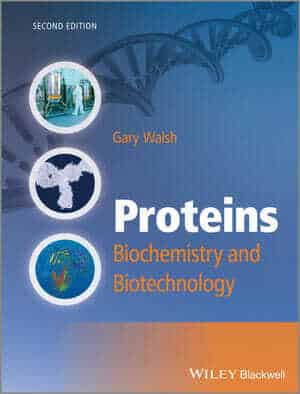
Proteins: Biochemistry and Biotechnology, 2nd Edition PDF is a definitive source of information for all those interested in protein science, and particularly the commercial production and isolation of specific proteins, and their subsequent utilization for applied purposes in industry and medicine.
Fully updated throughout with new or fundamentally revised sections on proteomics as, bioinformatics, protein glycosylation and engineering, well as sections detailing advances in upstream processing and newer protein applications such as enzyme-based biofuel production this new edition has an increased focus on biochemistry to ensure the balance between biochemisty and biotechnology, enhanced with numerous case studies.
Proteins: Biochemistry and Biotechnology 2nd Edition is an invaluable text for undergraduates of biochemistry and biotechnology but will also be relevant to students of microbiology, molecular biology, bioinformatics and any branch of the biomedical sciences who require a broad overview of the various medical, diagnostic and industrial uses of proteins.
Proteins: Biochemistry and Biotechnology 2nd Edition Features:
Preface xi
About the Companion Website xiii
Chapter 1 Proteins and proteomics 1
1.1 Proteins, an introduction 1
1.2 Genes, genomics and proteomics 2
1.3 Bioinformatics 12
1.4 Proteomics: goals and applications 14
Further reading 22
Chapter 2 Protein structure and engineering 25
2.1 Primary structure 25
2.2 Higher-level structure 36
2.3 Protein classification on the basis of structure 41
2.4 Protein structural stability 45
2.5 Higher-order structure prediction 47
2.6 Protein folding 48
2.7 Intrinsically disordered proteins 50
2.8 Protein engineering 51
2.9 Protein post-translational modification 54
Further reading 62
Chapter 3 Protein sources 65
3.1 Recombinant versus non-recombinant production 65
3.2 Approaches to recombinant protein production 67
3.3 Heterologous protein production in E. coli 72
3.4 Heterologous production in bacteria other than E. coli 77
3.5 Heterologous protein production in yeast 77
3.6 Heterologous protein production in fungi 78
3.7 Proteins from plants 80
3.8 Animal tissue as a protein source 84
3.9 Heterologous protein production in transgenic animals 85
3.10 Heterologous protein production using animal cell culture 86
3.11 Insect cell culture systems 87
Chapter 4 Protein purification and characterization 91
4.1 Protein detection and quantification 93
4.2 Initial recovery of protein 95
4.3 Removal of whole cells and cell debris 98
4.4 Concentration 103
4.5 Chromatographic purification 107
4.6 Protein inactivation and stabilization 128
4.7 Protein characterization 137
Further reading 139
Chapter 5 Large-scale protein production 141
5.1 Upstream processing 141
5.2 Downstream processing 154
5.3 Therapeutic protein production: some special issues 163
5.4 Range and medical significance of impurities potentially present in protein-based therapeutic products 166
Further reading 175
Chapter 6 Therapeutic proteins: blood products, vaccines and enzymes 177
6.1 Blood products 177
6.2 Anticoagulants 184
6.3 Thrombolytic agents 186
6.4 Additional blood-related products 189
6.5 Vaccine technology 190
6.6 Therapeutic enzymes 194
Further reading 202
Chapter 7 Therapeutic antibodies 205
7.1 Antibodies 205
7.2 IgG structure and activity 205
7.3 Antibody therapeutics: polyclonal antibody preparations 209
7.4 Antibody therapeutics: monoclonal antibodies 211
7.5 Therapeutic applications of monoclonal antibodies 220
7.6 Antibody conjugates 223
7.7 Bispecific antibodies 224
7.8 Antibody fragments 225
7.9 Engineering the antibody glycocomponent 228
7.10 Fc fusion proteins 229
Further reading 230
Chapter 8 Hormones and growth factors used therapeutically 233
8.1 Insulin 233
8.2 Glucagon 240
8.3 Gonadotrophins 240
8.4 Growth hormone 243
8.5 Erythropoietin 246
8.6 Other hormones 247
8.7 Growth factors 249
Further reading 253
Chapter 9 Interferons, interleukins and tumour necrosis factors 257
9.1 Regulatory factors: cytokines versus hormones 257
9.2 Interferons 258
9.3 Interleukins 264
9.4 Tumour necrosis factors 271
Further reading 274
Chapter 10 Proteins used for analytical purposes 277
10.1 The IVD sector 279
10.2 The basis of analyte detection and quantification 280
10.3 Enzymes as diagnostic/analytical reagents 281
10.4 Biosensors 289
10.5 Antibodies as analytical reagents 295
Further reading 309
Chapter 11 Industrial enzymes: an introduction 311
11.1 Sales value and manufacturers 313
11.2 Sources and engineering 314
11.3 Environmental benefits 315
11.4 Enzyme detection and quantification 315
11.5 Immobilized enzymes 316
11.6 Extremophiles 319
11.7 Enzymes in organic solvents 324
11.8 Industrial enzymes: the future 325
Further reading 325
Chapter 12 Industrial enzymes: proteases and carbohydrases 327
12.1 Proteolytic enzymes 327
12.2 Carbohydrases 340
Further reading 367
Chapter 13 Additional industrial enzymes 371
13.1 Lipases 371
13.2 Penicillin acylase 375
13.3 Amino acylase and amino acid production 378
13.4 Cyclodextrins and cyclodextrin glycosyltransferase 380
13.5 Enzymes and animal nutrition 382
13.6 Enzymes in molecular biology 387
Further reading 390
Chapter 14 Non-catalytic industrial proteins 393
14.1 Functional properties of proteins 393
14.2 Milk and milk proteins 397
14.3 Animal-derived proteins 408
14.4 Plant-derived proteins 411
14.5 Sweet and taste-modifying proteins 412
Further reading 414
Index 417
| File Size | 15 MB |
| File Format | |
| Download link | Free Download | Become a Premium, Lifetime Deal |
| Support & Updates | Contact Us | Broken Link |
| Join Our Telegram Channel |  |
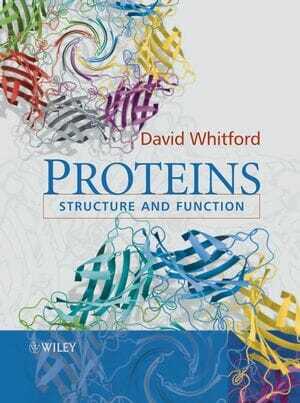
By David Whitford
Proteins Structure and Function PDF is a comprehensive introduction to the study of proteins and their importance to modern biochemistry. Each chapter addresses the structure and function of proteins with a definitive theme designed to enhance student understanding. Opening with a brief historical overview of the subject the book moves on to discuss the ‘building blocks’ of proteins and their respective chemical and physical properties. Later chapters explore experimental and computational methods of comparing proteins, methods of protein purification and protein folding and stability.
The latest developments in the field are included and key concepts introduced in a user-friendly way to ensure that students are able to grasp the essentials before moving on to more advanced study and analysis of proteins.
An invaluable resource for students of Biochemistry, Molecular Biology, Medicine and Chemistry providing a modern approach to the subject of Proteins.
Preface.
1. An introduction to protein structure and function.
2. Amino acids: the building blocks of proteins.
3. The three-dimensional structure of proteins.
4. The structure and function of fibrous proteins.
5. The structure and function of membrane proteins.
6. The diversity of proteins.
7. Enzyme kinetics, structure, function and catalysis.
8. Protein synthesis, processing and turnover.
9. Protein expression, purification and characterization.
10. Physical methods of determining the three-dimensional structure of proteins.
11. Protein folding in vivo and in vitro.
12. Protein structure and a molecular approach to medicine.
Epilogue.
Glossary.
Appendices.
Bibliography.
References.
Index.
| File Size | 31.3 MB |
| File Format | |
| Download link | Free Download | Become a Premium, Lifetime Deal |
| Support & Updates | Contact Us | Broken Link |
| Join Our Telegram Channel |  |
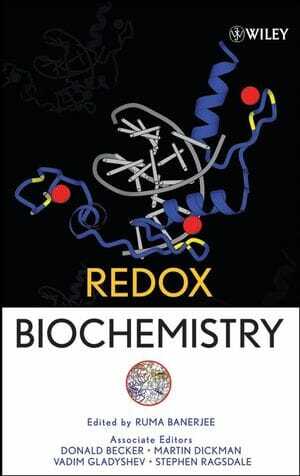
By Ruma Banerjee , Donald Becker , Martin Dickman , Vadim Gladyshev , Stephen Ragsdale
Contributors.
List of Abbreviations.
Preface.
1. Redox Metabolism and Life (Ruma Banerjee)
2. Antioxidant Molecules and Redox Cofactors (Donald Becker)
3. Antioxidant Enzymes (Vadim Gladyshev)
4. Redox Regulation of Physiological Processes (Martin Dickman)
5. Pathological Processes Related to Redox (Ruma Banerjee)
6. Specialized Methods (Stephen Ragsdale)
7. Index.
| File Size | 23.3 MB |
| File Format | |
| Download link | Free Download | Become a Premium, Lifetime Deal |
| Support & Updates | Contact Us | Broken Link |
| Join Our Telegram Channel |  |
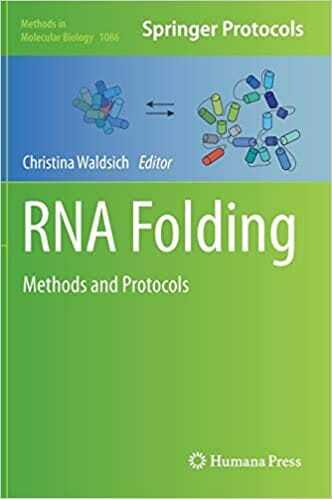
By Christina Waldsich
RNA Folding: Methods and Protocols PDF provides a comprehensive collection of experimental protocols which are suitable to dissect RNA folding pathways and to characterize the structure of RNA folding intermediates at nucleotide or even atomic resolution. The presented techniques include powerful tools with a long tradition in RNA research as well as more advanced, novel methods, thus the methods span multiple disciplines, including molecular biology, biochemistry, biophysics, and computational biology. Written in the highly successful Methods in Molecular Biology series format, chapters include introductions to their respective topics, lists of the necessary materials and reagents, step-by-step, readily reproducible laboratory protocols, and tips on troubleshooting and avoiding known pitfalls.
Practical and authoritative, RNA Folding: Methods and Protocols serves as a vital reference for researchers attempting to gain insights into the secrets of this astounding macromolecule.
| File Size | 9 MB |
| File Format | |
| Download link | Free Download | Become a Premium, Lifetime Deal |
| Support & Updates | Contact Us | Broken Link |
| Join Our Telegram Channel |  |